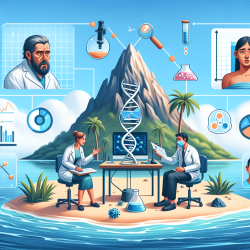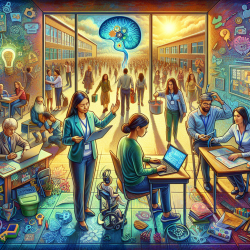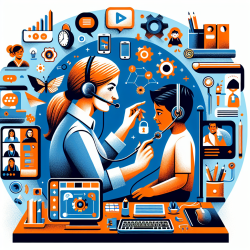As a speech-language pathologist dedicated to enhancing outcomes for children, it's essential to explore how innovative methodologies can improve our practice. One such approach is the use of Technological Ecological Momentary Assessment (EMA) tools, which offer real-time, real-world data collection. The recent research paper titled "Technological Ecological Momentary Assessment Tools to Study Type 1 Diabetes in Youth: Viewpoint of Methodologies" provides valuable insights that can be applied to our online therapy services at TinyEYE.
Understanding EMA Tools
EMA tools include continuous glucose monitoring (CGM), actigraphy, ambulatory blood pressure monitoring (ABPM), personal digital assistants (PDAs), smartphones, and phone-based systems. These tools are designed to capture dynamic behaviors, feelings, and physiological changes in real-time, offering a more comprehensive understanding of a child's daily life.
Continuous Glucose Monitoring (CGM)
CGM provides frequent glucose measurements, offering a detailed view of glucose patterns and variability. This data can empower youth with Type 1 Diabetes (T1D) to manage their condition more effectively, providing motivation for dietary changes and helping manage hyper- and hypoglycemia.
Actigraphy
Actigraphy is a non-invasive tool worn on the wrist to measure sleep patterns and physical activity. This is particularly useful for understanding sleep disturbances in youth with T1D, which can impact their overall health and daily functioning.
Ambulatory Blood Pressure Monitoring (ABPM)
ABPM measures blood pressure at regular intervals throughout the day, providing insights into cardiovascular health. This tool can help identify masked hypertension and the white-coat phenomenon, which are common in youth with T1D.
Personal Digital Assistants (PDAs) and Smartphones
PDAs and smartphones can be used to collect self-reported data on behaviors and experiences. These devices can help us understand the psychosocial and contextual factors that impact a child's daily life and therapy outcomes.
Applying EMA Tools in Online Therapy
Integrating EMA tools into our online therapy services can enhance our understanding of each child's unique challenges and progress. Here are some practical steps to consider:
- Continuous Monitoring: Use CGM data to tailor therapy sessions based on the child's glucose levels and patterns, addressing any cognitive or behavioral changes related to glucose variability.
- Sleep and Activity Tracking: Incorporate actigraphy data to adjust therapy schedules and activities, ensuring that sessions are held when the child is most alert and receptive.
- Cardiovascular Health: Utilize ABPM data to monitor and address any cardiovascular issues that may affect the child's participation in therapy.
- Behavioral Insights: Leverage data from PDAs and smartphones to understand the child's social interactions and mood, allowing for more personalized and effective therapy interventions.
Encouraging Further Research
While the current research provides a solid foundation, further studies are needed to explore the full potential of EMA tools in online therapy settings. Encouraging collaboration between researchers and practitioners can lead to innovative solutions that enhance therapy outcomes for children.
To read the original research paper, please follow this link: Technological Ecological Momentary Assessment Tools to Study Type 1 Diabetes in Youth: Viewpoint of Methodologies










